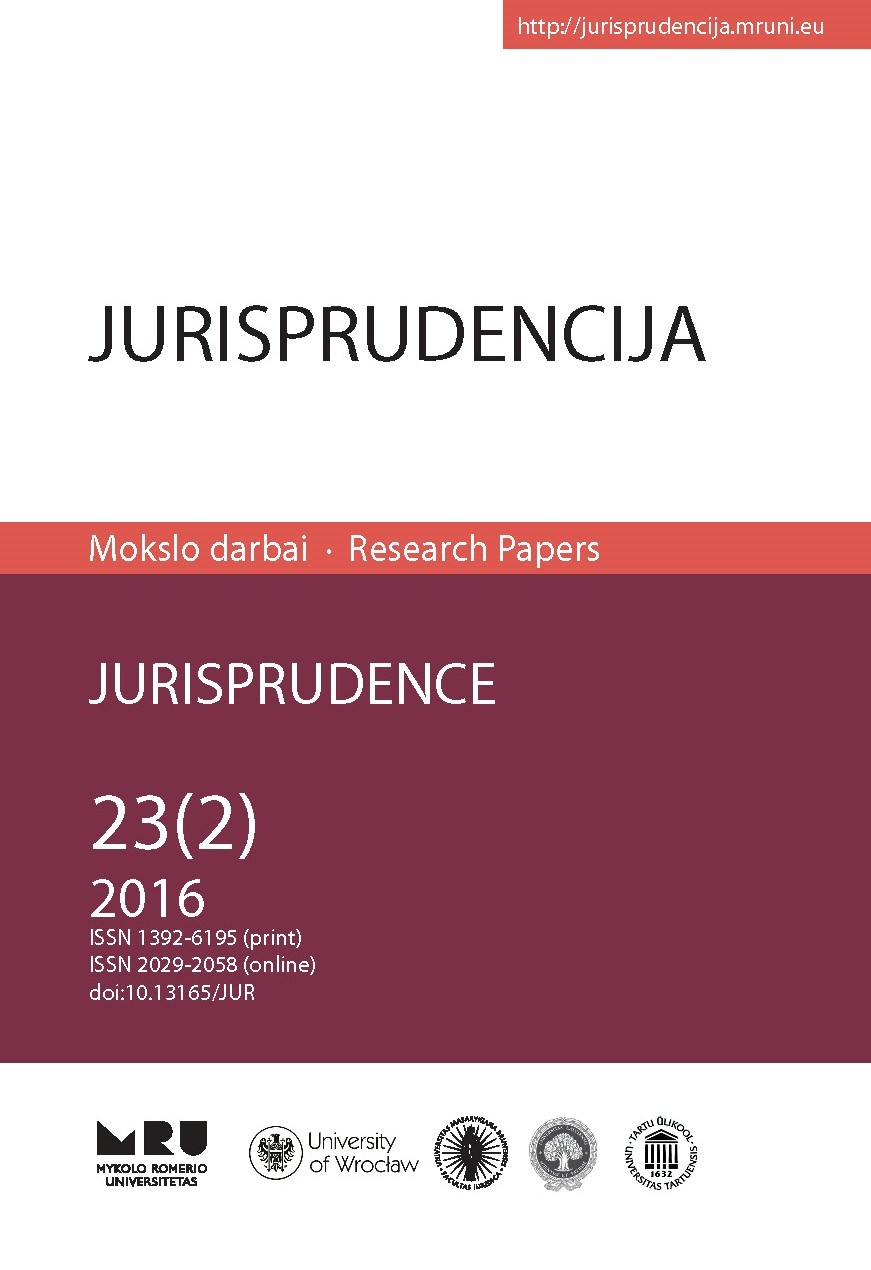NUSIKALSTAMAS IR TYČINIS BANKROTAS: TEORIJA
IR PRAKTIKA
CRIMINAL AND INTENTIONAL BANKRUPTCY: THEORY AND PRACTICE
Author(s): Albertas Milinis, Nerijus StrikulysSubject(s): Criminal Law
Published by: Mykolas Romeris University
Keywords: bankruptcy; criminal bankruptcy; intentional bankruptcy; delimitation criteria for intentional and criminal bankruptcy;
Summary/Abstract: The term bankruptcy is used in various ways in modern law. In the most general sense, bankruptcy refers to a particular state of insolvency of an individual or legal entity, namely the inability to pay debts to creditors. In a legal sense, this procedure is processed in court. In most countries around the world (including Lithuania), not only legal persons can go bankrupt, but also natural persons. In the European Union, Council regulation (EC) No. 1346/200 is applicable to collective insolvency proceedings. In the Republic of Lithuania, in particular cases in which it is stated that a person has caused his/her or his/her company’s insolvency intentionally, the question of responsibility of such persons can be raised. It should be noted that in terms of legal liability, bankruptcy is not just an institute of civil law, but also of criminal law. This article deals with the delimitation of civil and criminal liability for causing bankruptcy by the deliberate actions of persons. The Law on Enterprise Bankruptcy of the Republic of Lithuania describes intentional bankruptcy as purposely bringing a company to bankruptcy. Meanwhile, Article 209 of the Criminal Code of the Republic of Lithuania provides criminal liability for a person who deliberately mismanages a company, leading to its bankruptcy and thus causing severe material damage to creditors. It can be seen that in practice there are often problems in defining the boundaries of criminal and intentional bankruptcy, so this article aims not only to address the concepts of these types of bankruptcy, but also to identify delimitation criteria for them and analyse the related practical issues that relate to these criteria.
Journal: Jurisprudencija
- Issue Year: 23/2016
- Issue No: 2
- Page Range: 249-268
- Page Count: 20
- Language: Lithuanian

